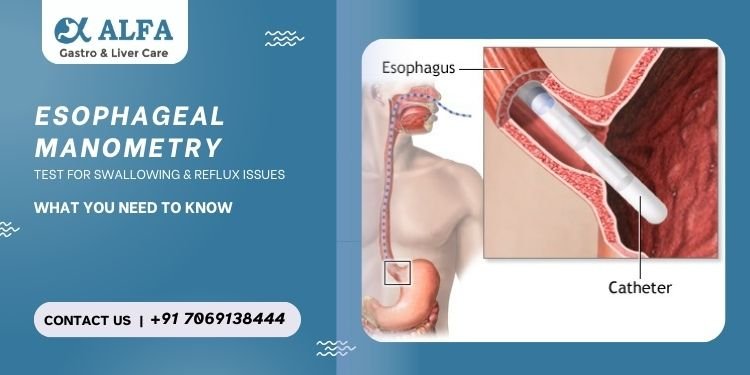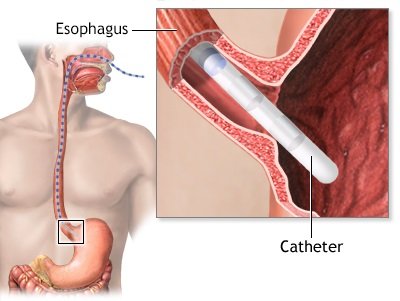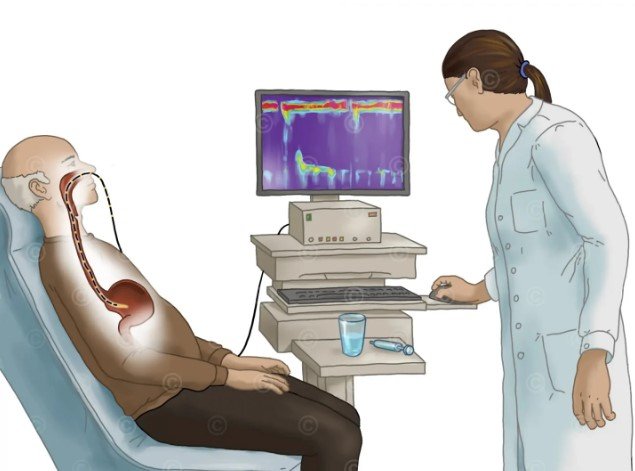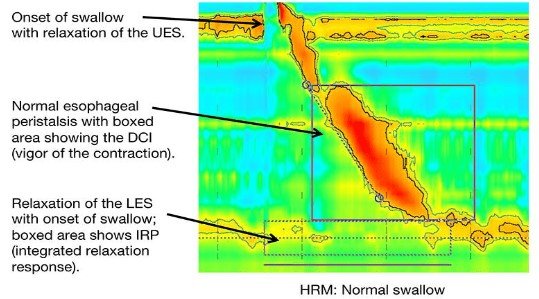Esophageal Manometry Test – What You Need to Know

Have you ever had trouble swallowing, unexplained chest pain, or constant reflux even after treatment? One test that doctors may suggest is called esophageal manometry.
It sounds complicated, but it’s actually a safe and straightforward procedure that helps doctors understand how your food pipe (esophagus) is working.
What Is Esophageal Manometry?
Your esophagus is the tube that carries food and drinks from your mouth to your stomach. For this to work properly, the muscles in the esophagus need to squeeze (contract) in the right way, and a valve at the bottom called the lower esophageal sphincter (LES), needs to open and close at the right time.
Esophageal manometry is a test that measures how well these muscles and the valve are working. A thin tube (catheter) is gently passed through your nose into the esophagus. As you swallow small sips of water, the tube records pressure changes inside your food pipe.

Indications for Esophageal Manometry
| Indication | Why It’s Done |
| Pre-op evaluation for anti-reflux surgery | To rule out achalasia or severe motility disorders before fundoplication. |
| Dysphagia with normal EGD & imaging | Helps detect achalasia, esophagogastric junction (EGJ) outflow obstruction, or ineffective motility. |
| Non-cardiac chest pain | Particularly if symptoms persist despite PPI therapy, to identify spastic disorders. |
| Evaluation of rumination or belching | Often combined with impedance manometry |
| Scleroderma or systemic sclerosis | To assess esophageal involvement and disease severity. |
| Post-surgical dysphagia (e.g., after fundoplication) | Helps determine whether symptoms are mechanical or functional. |
Who Should Not Have This Test?
This test is usually safe, but it may not be done if:
- You have severe nose blockage or injury.
- You have serious heart or lung problems.
- You have a very narrow esophagus (stricture) that the tube cannot pass through.
- You have a high risk of bleeding.
How Is the Test Done?
Here’s what usually happens:
- Before the test: You’ll need to stop eating or drinking for about 6 hours.
- During the test:
- A thin, soft tube is gently inserted through your nose into your food pipe.
- The tube is placed in the right position near your stomach valve.
- You’ll be asked to swallow small sips of water (about 10 times).
- Time taken: Around 20–30 minutes.
Comfort: It may feel a little strange, but it’s not painful. Breathing is not affected.

What Can the Test Show?
Esophageal manometry can help diagnose conditions like:
- Achalasia: The valve doesn’t open properly, and food can’t move down.
- Esophagogastric junction (EGJ) blockage: The valve is too tight, but the muscles still work.
- Spasms: Muscles squeeze too early or too strongly, causing pain.
- Weak muscles (IEM): The esophagus doesn’t push food down effectively.
No movement at all: Often seen in people with diseases like scleroderma.

Helpful Things to Know
- Manometry is usually done before a pH test (acid test) so results are accurate.
- You don’t need to stop acid medicines unless both tests are being done together.
- The equipment used is safe, and reusable tubes are cleaned thoroughly.
- Some people may have abnormal results but no symptoms, so doctors always look at the big picture, your symptoms plus test results.
Final Words
Esophageal manometry is a simple but powerful test that shows how well your food pipe is working. It helps doctors find the exact cause of swallowing problems, chest pain, or reflux issues, and ensures you get the right treatment.
If your doctor recommends this test, remember, it’s quick, safe and gives valuable answers about your health.
